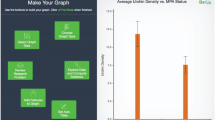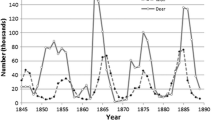Abstract
Graphs are commonly used in science, mathematics, and social sciences to convey important concepts; yet students at all ages demonstrate difficulties interpreting graphs. This paper reports on an experimental study of free, Web-based software called SmartGraphs that is specifically designed to help students overcome their misconceptions regarding graphs. SmartGraphs allows students to interact with graphs and provides hints and scaffolding to help students, if they need help. SmartGraphs activities can be authored to be useful in teaching and learning a variety of topics that use graphs (such as slope, velocity, half-life, and global warming). A 2-year experimental study in physical science classrooms was conducted with dozens of teachers and thousands of students. In the first year, teachers were randomly assigned to experimental or control conditions. Data show that students of teachers who use SmartGraphs as a supplement to normal instruction make greater gains understanding graphs than control students studying the same content using the same textbooks, but without SmartGraphs. Additionally, teachers believe that the SmartGraphs activities help students meet learning goals in the physical science course, and a great majority reported they would use the activities with students again. In the second year of the study, several specific variations of SmartGraphs were researched to help determine what makes SmartGraphs effective.






Similar content being viewed by others
References
Achieve, Inc. (2013). The next generation science standards, appendix F: science and engineering practices. Retrieved from http://www.nextgenscience.org/next-generation-science-standards
Ainsworth S (2008) The educational value of multiple-representations when learning complex scientific concepts. In: Gilbert JK, Reiner M, Nakhleh M (eds) Visualization: theory and practice in science education models and modeling in science education, Vol 3. Springer Science + Business, pp 191–208
Azevedo R, Cromley JG, Seibert D (2004) Does adaptive scaffolding facilitate students’ ability to regulate their learning with hypermedia? Contemp Educ Psychol 29:344–370
Bowen GM, Roth W-M (1998) Lecturing graphing: what features of lectures contribute to student difficulties in learning to interpret graphs? Res Sci Educ 28:77–90
de Jong T (2006) Technological advances in inquiry learning. [Education Forum]. Science 312:532–533
Friel SN, Bright GW (1996, April) Building a theory of graphicacy: how do students read graphs? In: Paper presented at the annual meeting of the American Educational Research Association, New York (ERIC Document Reproduction Service No. ED 395 277)
Friel SN, Curcio FR, Bright GW (2001) Making sense of graphs: critical factors influencing comprehension and instructional implications. J Res Math Educ 32(2):124–158
Kay R, Zucker A, Staudt C (2012) Being smart about SmartGraphs: findings from an experimental trial in physical classrooms. The Concord Consortium, Concord, MA. Retrieved from http://concord.org/sites/default/files/pdf/smartgraphs-research-fall-2011.pdf
Lee H-S, Liu OL (2009) Assessing learning progression of energy concepts across middle school grades: the knowledge integration perspective. Sci Educ 94(4):665–688
Leinhardt G, Zaslavsky O, Stein MK (1990) Graphs and graphing: tasks, learning, and teaching. Rev Educ Res 60(1):1–64
Mokros J, Tinker R (1987) The impact of microcomputer-based labs on children’s ability to interpret graphs. J Res Sci Teach 24(4):369–383
Monk S (2003) Representation in school mathematics: learning to graph and graphing to learn. In: Kilpatrick J, Martin WG, Schifter D (eds) A research companion to principles and standards for school mathematics. National Council of Teachers of Mathematics, Reston, VA, pp 250–262
Murray TS, Kirsch IS, Jenkins LB (1997) Adult literacy in OECD countries: a technical report for the first international adult literacy survey. National Center for Education Statistics, Washington, DC
Rangel ES, Linn MC (2007) Science education that makes sense (Research Points #5:1). American Educational Research Association, Washington, DC
Rethinam V, Pyke C, Lynch S (2008) Using multilevel analyses to study the effectiveness of science curriculum materials. Eval Res Educ 21(1):18–42
Robelen E (2013) Calculator use on exams to shift with the common core. Education Week 33:1, 1
Roth W-M (1998) Unspecified things, signs, and “natural objects”: towards a phenomeno-logical hermeneutic of graphing. In: Berenson SB, Dawson KR, Blanton M, Coulombe WN, Kolb J, Norwood K, Stiff L (eds) Proceedings of the 20th annual meeting of the North American Chapter of the International Group for the Psychology of Mathematics Education. ERIC Clearinghouse for Science, Mathematics, and Environmental Education, Columbus, OH, pp 291–297
Roth W-M, McGinn MK (1997) Graphing: cognitive ability or practice? Sci Educ 81:91–106
Roth W-M, Bowen GM, McGinn MK (1999) Differences in graph-related practices between high school biology textbooks and scientific ecology journals. J Res Sci Teach 36:977–1019
Roth W-M, Pozzer-Ardenghi L, Han JH (2005) Critical graphicacy: understanding visual representation practices in school science. Springer-Kluwer, Dordrecht
van Zee E, McDermott LC (1987) Investigation of student difficulties with graphical representations in physics. In: Novak J (ed) 2nd International seminar “misconceptions and educational strategies in science and mathematics”, Ithaca, NY, 1987, Vol III. Cornell University, pp 531–539
Woolnough J (2000) How can students learn to apply their mathematical knowledge to interpret graphs in physics? Res Sci Educ 30(3):259–268
Acknowledgments
This research was conducted under National Science Foundation Grant No. DRL-0918522, awarded to the Concord Consortium (Carolyn Staudt, PI). Any opinions, findings, and conclusions or recommendations expressed in this paper are those of the authors and do not necessarily reflect the views of the National Science Foundation.
Author information
Authors and Affiliations
Corresponding author
Appendices
Appendix 1
SmartGraphs’ Learning Goals for the Physical Science Motion Unit
Understand Direction of Motion
-
1.
Determine direction of motion from a position–time graph.
-
2.
Determine direction of motion from a velocity–time graph.
-
3.
Distinguish between speed and velocity when reading a velocity–time graph.
Understand Rate of Change
-
4.
Identify constant, positive, negative, and 0 rates of change in position with respect to time from a position–time graph.
-
5.
Identify constant, positive, negative, and 0 rates of change from a velocity–time graph.
-
6.
Estimate and predict through interpolation and extrapolation, an object’s speed in different time intervals on a position–time graph.
-
7.
Estimate, predict, and determine an object’s average speed over a given time interval on a position–time graph.
-
8.
Interpret and compare position or velocity of an object from two graphs showing different rates of change, as well as interpreting the intersection of the two graphs in real context.
Extend Learning to Graphs Other Than Motion of Objects, e.g., Temperature, Money, and Algebra
-
9.
Interpret characteristics (rate of change, etc.) such as above in new contexts.
Appendix 2
Two Sample Test Items

Rights and permissions
About this article
Cite this article
Zucker, A., Kay, R. & Staudt, C. Helping Students Make Sense of Graphs: An Experimental Trial of SmartGraphs Software. J Sci Educ Technol 23, 441–457 (2014). https://doi.org/10.1007/s10956-013-9475-3
Published:
Issue Date:
DOI: https://doi.org/10.1007/s10956-013-9475-3




